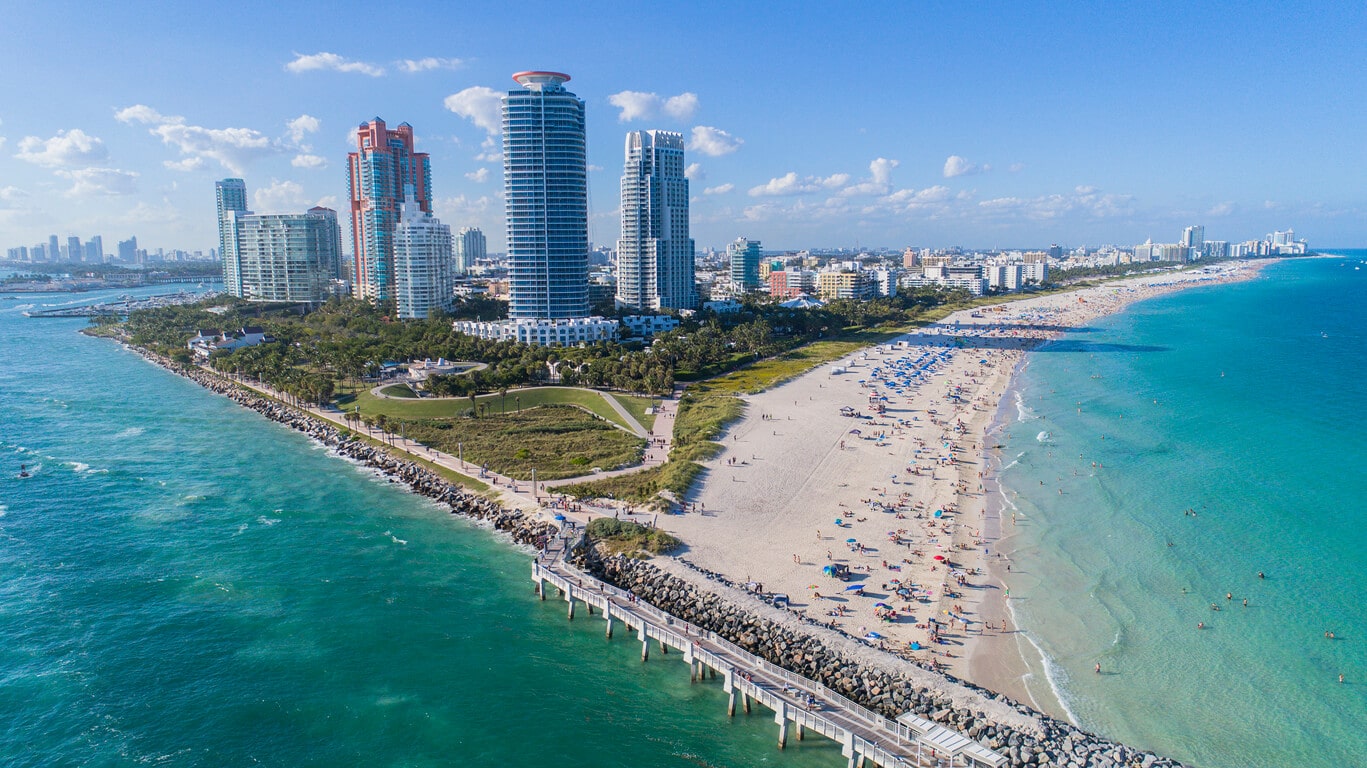
Ever wondered what makes Miami's weather so unique? Known for its sunny skies and warm temperatures, Miami offers a climate that's both inviting and intriguing. But what really sets Miami apart? From its tropical monsoon climate to its hurricane season, there's more to this city's weather than meets the eye. Did you know Miami experiences over 200 sunny days a year? Or that it has a "wet season" and a "dry season"? Whether you're planning a trip or just curious, these 20 facts about Miami's weather will give you a deeper understanding of what to expect. Ready to learn more? Let's dive into the fascinating world of Miami's climate!
Miami's Tropical Climate
Miami is known for its warm weather and beautiful beaches. The city's tropical climate makes it a popular destination for tourists and locals alike. Here are some interesting facts about Miami's weather.
-
Miami has a tropical monsoon climate, which means it experiences hot, humid summers and warm, dry winters.
-
The average temperature in Miami is around 77°F (25°C) throughout the year, making it one of the warmest cities in the United States.
-
Miami gets about 60 inches of rain annually, with the majority falling during the wet season from May to October.
-
The city experiences about 250 sunny days per year, perfect for beachgoers and outdoor enthusiasts.
Hurricane Season in Miami
Hurricanes are a significant part of Miami's weather patterns. The city is often in the path of these powerful storms, which can bring heavy rain, strong winds, and flooding.
-
Hurricane season in Miami runs from June 1 to November 30, with the peak occurring between August and October.
-
Miami has been hit by several major hurricanes, including Hurricane Andrew in 1992, which caused extensive damage and is one of the costliest hurricanes in U.S. history.
-
The city has a well-developed hurricane preparedness plan, including evacuation routes and shelters to keep residents safe during storms.
-
Miami's building codes have been strengthened to withstand hurricane-force winds, making new constructions more resilient to storm damage.
Unique Weather Phenomena
Miami's weather is not just about sunshine and hurricanes. The city experiences some unique weather phenomena that add to its charm.
-
Miami occasionally experiences waterspouts, which are tornadoes that form over water. These can be seen off the coast and are a spectacular sight.
-
The city also experiences "King Tides," which are exceptionally high tides that can cause flooding in low-lying areas, even on sunny days.
-
Miami's location near the Atlantic Ocean means it can experience sudden and intense thunderstorms, especially during the summer months.
-
Despite its tropical climate, Miami has recorded snowfall once, on January 19, 1977. It was a rare and memorable event for the city's residents.
Impact of Climate Change
Climate change is affecting weather patterns worldwide, and Miami is no exception. The city is taking steps to address these challenges and protect its future.
-
Rising sea levels are a significant concern for Miami, as much of the city is at or near sea level. This increases the risk of flooding during storms and high tides.
-
Miami is investing in infrastructure improvements, such as raising roads and installing pumps, to mitigate the effects of rising sea levels and flooding.
-
The city is also promoting green building practices and renewable energy to reduce its carbon footprint and combat climate change.
Fun Weather Facts
Miami's weather has some fun and interesting aspects that make it a unique place to live and visit.
-
Miami is one of the few places in the United States where you can swim in the ocean year-round, thanks to its warm water temperatures.
-
The city's warm climate makes it a popular location for filming movies and TV shows, including the iconic series "Miami Vice."
-
Miami's weather is ideal for growing tropical fruits like mangoes, avocados, and papayas, which are abundant in local markets.
-
The city's Art Deco architecture, found in areas like South Beach, is designed to take advantage of the sunny weather with features like flat roofs and large windows.
-
Miami hosts numerous outdoor festivals and events throughout the year, including the famous Miami Beach Art Deco Weekend and the Calle Ocho Festival, celebrating the city's vibrant culture and beautiful weather.
Miami's Weather in a Nutshell
Miami's weather is a mix of tropical sunshine, occasional rain, and the ever-present humidity. Summers are hot and humid, with temperatures often soaring above 90°F. Winters, on the other hand, are mild and pleasant, making Miami a popular winter getaway. Rainfall is heaviest from June to September, thanks to the hurricane season. Speaking of hurricanes, Miami's location makes it susceptible to these powerful storms, so always stay prepared. The city's coastal position also means beautiful beaches and stunning ocean views, but it comes with the risk of flooding during heavy rains. Despite the occasional weather challenges, Miami's climate offers plenty of sunny days perfect for outdoor activities. Whether you're a local or a visitor, understanding Miami's weather patterns can help you make the most of your time in this vibrant city. Stay cool, stay safe, and enjoy the sunshine!
Was this page helpful?
Our commitment to delivering trustworthy and engaging content is at the heart of what we do. Each fact on our site is contributed by real users like you, bringing a wealth of diverse insights and information. To ensure the highest standards of accuracy and reliability, our dedicated editors meticulously review each submission. This process guarantees that the facts we share are not only fascinating but also credible. Trust in our commitment to quality and authenticity as you explore and learn with us.
